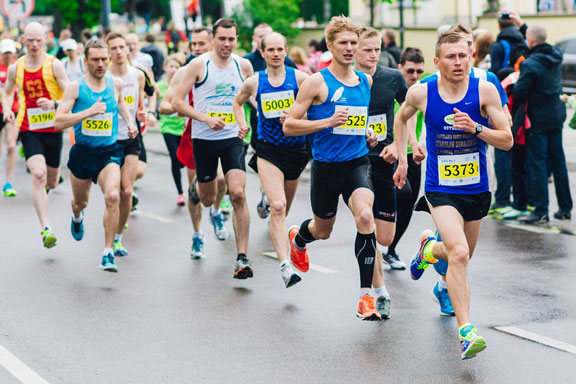Oct 12, 2018RED-S and how it impacts athletes
Relative energy deficiency syndrome (RED-S) occurs when athletes experience low energy availability for an extended period of time. It’s most prevalent among distance runners. RED-S can have several detrimental effects, including damaging bone health, disrupting menstrual function in females (potentially other hormone function disruption in males), and causing other physical and psychological problems.
 At Colorado, I monitor for RED-S by developing an individual nutrition profile for each runner to track their maturation over the course of their career. Within this profile, I include an in-depth method of body composition analysis from the International Society for the Advancement of Kinanthropometry (ISAK). This method of anthropometry is specifically concerned with composition changes as the result of shifts in nutrition, training, and lifestyle.
At Colorado, I monitor for RED-S by developing an individual nutrition profile for each runner to track their maturation over the course of their career. Within this profile, I include an in-depth method of body composition analysis from the International Society for the Advancement of Kinanthropometry (ISAK). This method of anthropometry is specifically concerned with composition changes as the result of shifts in nutrition, training, and lifestyle.
The ISAK test is a fantastic tool because it allows for a more diligent and specific monitoring than simple body fat percentage equations. I present the results from this assessment as a sum of skinfolds (sum of seven) to minimize the risk of the findings being distorted. Other information in the athlete’s nutrition profile can include any notes I have from interactions with athletes regarding nutrition education provided, supplementation history based on blood work and trends within their blood work, bone mineral density history, sweat analysis/hydration protocol, and other pertinent lab results.
As a practitioner, it is also important when reviewing anthropometrics (ISAK results) to be sensitive and clear with athletes and coaches that there can be distinct variability in runners’ physiques. I tell them the body type and level of adiposity that equates to optimal performance in one athlete may not be the same for another. Thus, weight on a scale is not often the focus within our Performance Nutrition Department.
» ALSO SEE: Debunking 11 heat illness myths
With the ISAK results, I have developed high performance ranges (HPR) for both male and female distance runners based on normative data published on elite distance athletes. Using consistent monitoring, I can help each athlete identify within the HPR where they are able to train and prevent injury, as well as the more specific range that I call “go time,” in which they perform at a very high level.
This part is fun because it is very individualized, and when executed correctly, it can provide a performance advantage to the athlete. Further, it allows me as the sport dietitian to have concise, beneficial conversations with the coaches on where the athletes are at during specific training times of the year. For example, it is really important that proper rest follows a high stress training period, and for most athletes, this means increasing adipose tissue slightly.
The assessment of RED-S goes beyond collecting and interpreting anthropometrics. At all times, I work within an interdisciplinary team to monitor the athlete’s ability to perform, train, recover, and maintain healthy biochemical parameters. By collaborating with our athletic department’s Student-Athlete Wellness Team (SAWT), consisting of our sports medicine physicians, a sport psychologist, athletic trainers, and coaches, we do our best to ensure our runners are staying healthy and preventing injury.
When the SAWT team identifies that an athlete has RED-S symptoms through a specific assessment tool that we developed, we initiate a multidisciplinary intervention. The goals are to resolve the RED-S and prevent injury that could potentially cost an athlete their season.



